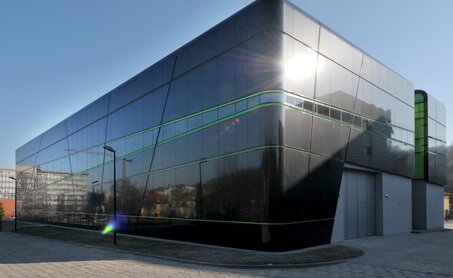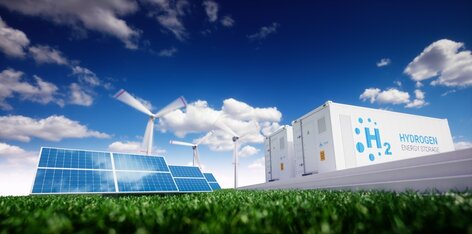Energa to implement an innovative hydrogen project

The Energa Group's Faraday Research and Development Centre, together with scientists, will implement a research project involving a two-way hydrogen production installation. The installation may be a key element of energy storage systems, contributing to the performance of renewable energy sources, and enhancing the flexibility of power plant operation.
On 10 March 2020, the Energa Group's Research and Development Centre (CBRF) signed an agreement for EU co-funding of a construction project involving a modular installation of reversible hydrogen-producing solid oxide cells to improve the flexibility of power plant operation.
This is the first project of this kind at the Energa Group financed by the National Centre for Research and Development.
"This is our first innovative hydrogen project of this kind. We are happy that the great commitment of the CBRF team and the scientists working with us is appreciated. The project was awarded a record-high score in terms of the evaluation of the financing criteria," says Marcin Karlikowski, President of Energa's Research and Development Centre.
The project was very well received by experts. It will be implemented by Energa's CBRF (Consortium Leader) and the Szewalski Institute of Fluid-Flow Machinery of the Polish Academy of Sciences. The Institute of Power Engineering will be the subcontractor.
The prototype installation is to be built within three years. It will produce hydrogen and electricity, increasing the flexibility of power plant operation and the use of renewable energy sources at the Energa Group. If the project meets all the objectives set by the scientists, such installations will also be installed at other facilities.
The purpose of the project is to develop and build a power-to-gas (P2G) system which produces hydrogen using technical steam. Such an installation can be a key component of energy storage systems, using surplus energy, in particular from unstable renewable energy sources (wind, solar power).
Electrotechnical cells, also working in reversible mode (rSOC), make it possible to improve flexibility of operation of conventional power units.
The project will focus on a prototype installation with an rSOC stack, which achieves an efficiency level of more than 70% in electrolyser mode and 60% in fuel cell mode (SOFC), which gives an overall process efficiency of about 42%.
We draw attention to the fact that the generation of synthetic fuels using surplus electricity from renewable sources makes it possible for the integration of the power system with the gas system, which significantly strengthens the security of the power system.
The project budget is PLN 7.4 million and the amount of EU co-financing is PLN 5.7 million.

The Faraday Research and Development Centre (CBRF) was established in 2017 as one of the main tools to implement the Energa Group's Innovation Strategy. The key task of the Centre is to launch new projects which can meet the needs of state-of-the-art power engineering and the challenges it faces.
CBRF is based at LINTE^2 – Poland’s most advanced electricity laboratory on the premises of the Gdańsk University of Technology, unparalleled in Europe. The establishment of the Centre is one of the first such initiatives in Poland.

